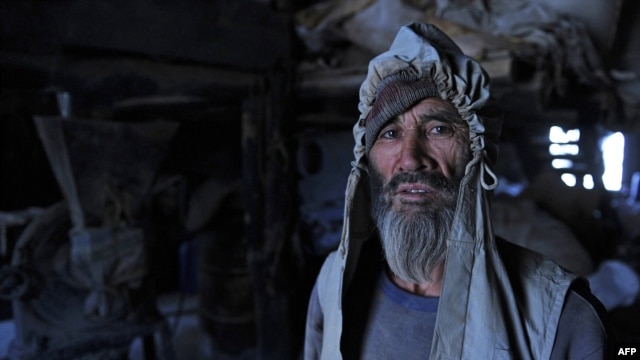Saturday 29 December 2012

ہزارہ کا ایک نوجوان اپنے رشتے دار کی ہلاکت پر رورہا ہے — رایئٹرز فوٹو
علمدار روڈ سے پورا شہر پار کرنے کے بعد ہم ہزارہ ٹاؤن پہنچے۔ یہ قصبہ باقی ماندہ شہر سے جیسے کٹا ہوا ہے۔ راستے میں ایک پل، ایک لمبی سڑک اور بے تحاشا خشمگین نگاہیں تھیں۔ کوئٹہ میں ہزارہ قوم دو جگہ آ باد ہے۔ ایک آبادی چھاؤنی کے پاس ہے اور دوسری شہر کے پار۔ ہزارہ ٹاؤن ہر حال سے پسماندگی کی ایک داستان ہے۔ اکھڑی ہوئی سڑکیں، ٹوٹے پھوٹے گھر، ٹاٹ کے پردے اور اندر مسافر خانوں جیسی زندگی، جسے یہ لوگ چند کپڑوں اور چند برتنوں کے ساتھ گزار رہے ہیں۔
ہم ہزارہ کے بارے میں کھوجتے کھوجتے فریدون تک پہنچے تھے۔ روز زندگی کی بازی کھیلنے اور تقریبا ہر روز ہی ہار جانے والے یہ لوگ بقا کی بڑی مستقل مزاج خواہش رکھتے ہیں۔ جس طرح لاکھ کوشش کے باوجود پکی اینٹوں کے بیچ کوئی نہ کوئی بوٹی سر اٹھا ہی لیتی ہے، بالکل ویسے ہی بم دھماکوں،اغوا اور قتل و غارت گری کے باوجود یہ لوگ خوشی کا سامان کر ہی لیتے ہیں۔ کسی نے بتایا کہ یہ بچہ موسیقی کی خاصی شدھ بدھ رکھتا ہے اور بہت عمدہ کی بورڈ بجاتا ہے۔
ڈھونڈھتے ڈھونڈھتے ننھے فنکار کے گھر پہنچے تو پتہ چلا کہ ہمارے مقدر میں صرف اس کا فن نہیں بلکہ ان لوگوں کی مہمان نوازی بھی ہو گی۔ یہ شاید یہاں کا آخری گھر تھا اور گھر کیا تھا، غربت کی ایک تصویر تھی۔ صاف ستھرا آنگن، کونے میں چند بالٹیاں، جن میں شاید پانی تک کہیں سے لایا گیا تھا اور ایک تیتر کا پنجرہ۔ کچی اینٹوں کے فرش سے دائیں مڑیں تو مہمان خانہ تھا۔
کچھ ہی دیر میں چھوٹا سا کمرہ دس کے قریب لوگوں سے بھر گیا۔ کھانا چننے کا منظر بالکل قصے کہانیوں ایسا تھا۔ پہلے چاندنی بچھی، پھر برتن چنے گئے۔ اس کے بعد ایک برتن میں گرم پانی اور ایک چلمچی میں ہاتھ دھلوائے گئے۔ پہلی بار اندازہ ہوا کہ ایرانی تہذیب میں نفاست کا کیا لطف ہے۔ کھانے کے بعد قہوے کا دور چلا اور اس دوران فریدون نے اپنا کی بورڈ لگا لیا۔
کمرے میں شوخ پردوں کے علاوہ، اس کے بھائی کی تصویر بھی لگی تھی۔ ایک طرف فارسی میں صبر کی تاکید تھی اور ایک دیوار پہ افغانستان کا مقتول صدر نجیب مسکرا رہا تھا۔ یہ خاندان اس وقت افغانستان سے اٹھ آیا جب طالبان نے ان پہ زندگی تنگ کر دی۔ جو بال تک نہیں کاٹنے دیتے وہ بھلا خوش رہنے کی اجازت کیونکر دیتے۔ سو سب مال اسباب بیچ کر یہ لوگ پاکستان آ گئے اور کوئٹہ میں از سر نو زندگی کا آغاز کیا۔ فریدون کے باپ نے ایک سی ڈی اور کیسٹ کی دوکان کھول لی۔ کمرے میں پھیلی سرخوشی اس بات کی غماز تھی کہ یہاں رہنے والوں نے اچھا وقت دیکھا ہے۔
بچے نے گانا شروع کیا تو وقت واقعی رک گیا۔ اس کی مشتاق انگلیاں سر کا سفر طے کر رہی تھیں اور سننے والے دم بخود تھے۔ کومل تیور کی تانیں اور فارسی کے الفاظ اپنا جادو جگا رہے تھے اور اپنی بچی کھچی متاع جاں لپیٹنے کے بارے میں فریدوں گا رہا تھا
عزیزم قدر ے یک دیگر می داند
اجل سنگ است و آدم مثل شیشہ است ۔۔۔۔۔ جدائی مستقل غم است
دوستو ایک دوسرے کی قدر کرو،
موت ایک پتھر ہے اور آدمی بس ایک شیشے کی مانند ہے، جدائی مستقل غم ہے
ہم نے ساری یادیں اپنے کیمرے میں قید کیں اور واپس آ گئے۔ زندگی چونکہ ہر دم اپنی مصروفیات بکھیرتی رہتی ہے سو فریدون بھی آہستہ آہستہ ہمارے ذہنوں سے محو ہو گیا۔ کچھ دن تک وہ آخری منظر ہمارے زہنوں میں رہا جس میں دروازے سے نکلتے وقت اس کے چچا کے منت زدہ الفاظ سنائی دئیے۔ صاحب ۔وہ فریدون کے بابا کی دکان بہت دنوں سے بند ہے۔ ان لوگوں نے دھمکی دیا ہے کہ دوکان کھولا تو جان سے مار دیں گے۔ آپ دیکھو نا کہیں کوئی شو مل جائے۔۔ فریدون کو پڑھنے کا بہت شوق ہے صاحب۔
جس دن کوئٹہ میں پہلی بار برف گری اس رات اس کے چچا کا فون آیا اور انہوں نے بتایا کہ صحابہ کے سپاہیوں نے فریدون پے حملہ کیا ہے۔ ہو سکتا ہے وہ ایرانیوں سے قادسیہ کی جنگ کا بدلہ لے رہے ہوں مگر یہ لوگ تو حضرت علی کی ایک چٹھی پہ مسلمان ہو گئے تھے، عین ممکن ہے کہ حملہ آور جھنگ کے کسی لشکر کے لوگ ہوں جو اسلام کی خاطر فریدون کو مارنے آئے تھے اور جنہیں جھنگ سے کوئٹہ کے اس سات سو اکسٹھ کلومیٹر لمبے راستے میں کوئی غیر شرعی چیز نظر نہیں آئی۔
جب تک ہم اس کے گھر پہنچے، فریدون کی آنکھ سوج کے ایک طرف ڈھلک چکی تھی۔ ساری رات باہر برف گرتی رہی اور اندر فریدون کی ماں اس کی آنکھ پہ پٹیاں کرتی رہی۔ اگلے دن میں نے فریدون کے چچا کو فون کیا تو اس کے موبائل پہ مجھے پنجابی کی نعت سنائی دی۔ مجھے مٹھی، تھرپارکر میں ملنے والا انیل کمار یاد آ گیا جو ہندو ہونے کے با وجود ہر جملے میں دو بار الحمدللہ کہتا اور اپنی کالونی کے خاکروب کی آوازیں بھی پڑیں. جس نے بچوں کے نام اسلم اور اکرم رکھ چھوڑے تھے۔
فریدون کے بارے میں لکھنے سے پہلے میں نے بہت سوچا۔۔ کیا اس طرح اس کی جان خطرے میں تو نہیں پڑ جائے گی۔ کیا ملالہ کی طرح فریدون بھی ایجنٹ تو نہیں ٹھیرے گا یا جو تھوڑی بہت زندگی کی رمق فریدون کے گھر میں باقی ہے وہ کیا وہ رہ پائے گی۔ مگر خاموش لوگوں کے اس ہجوم میں مجھے اس کی پر عزم آ واز سنائی دی۔ اپنی ٹوٹی پھوٹی فارسی نما اردو میں فریدون بولا صاحب لکھو، کچھ نہیں ہوگا۔



